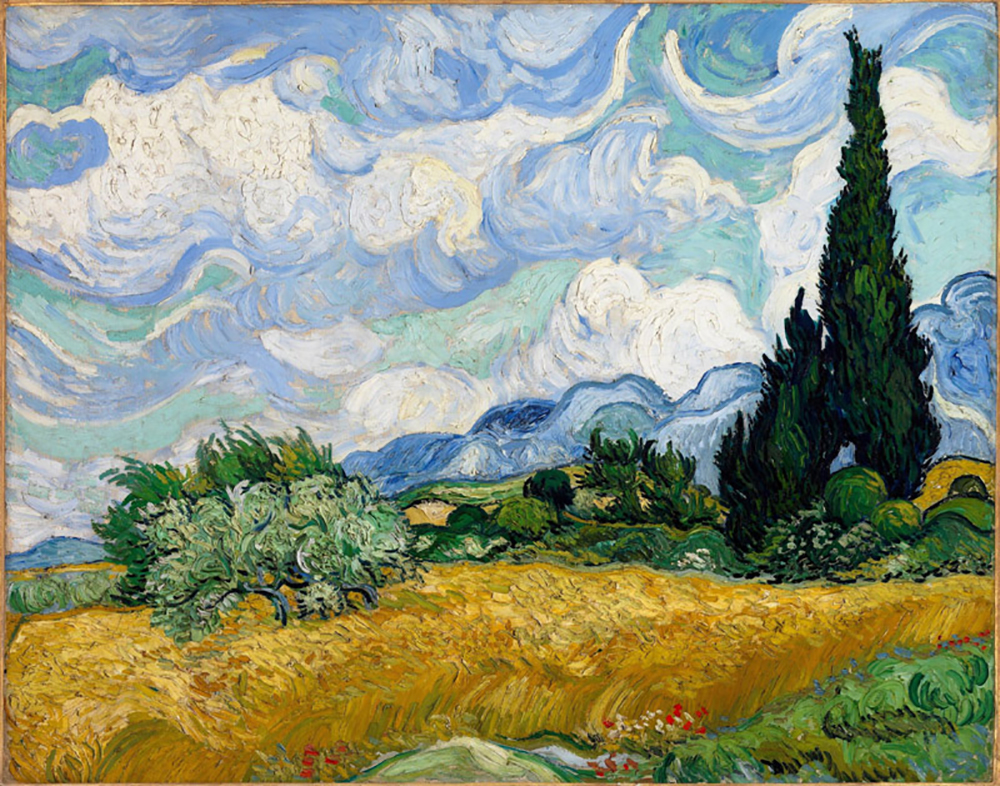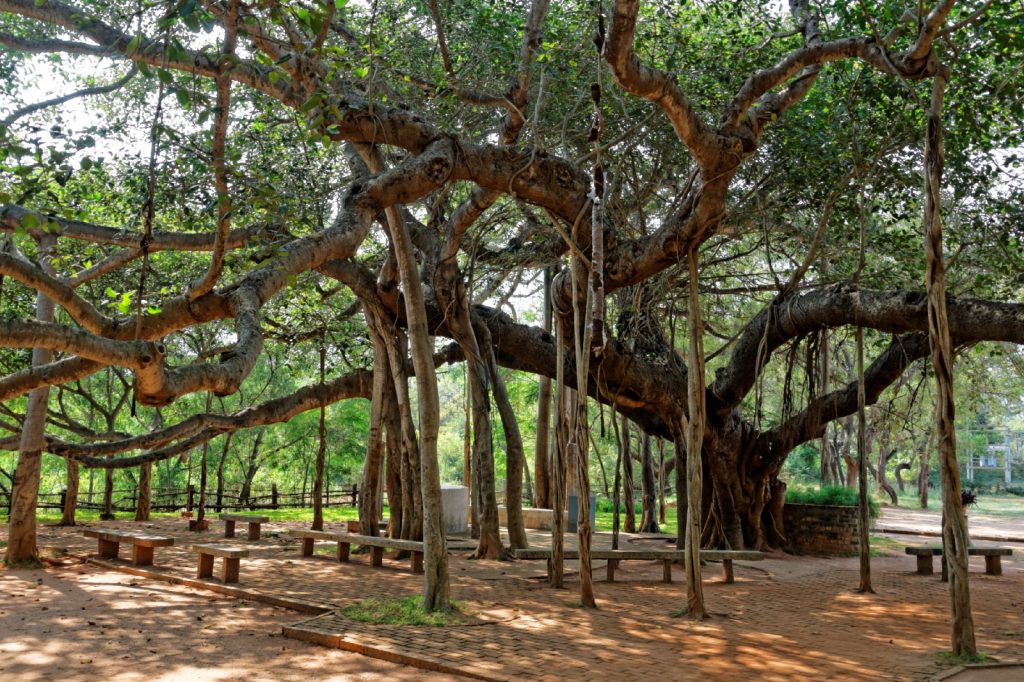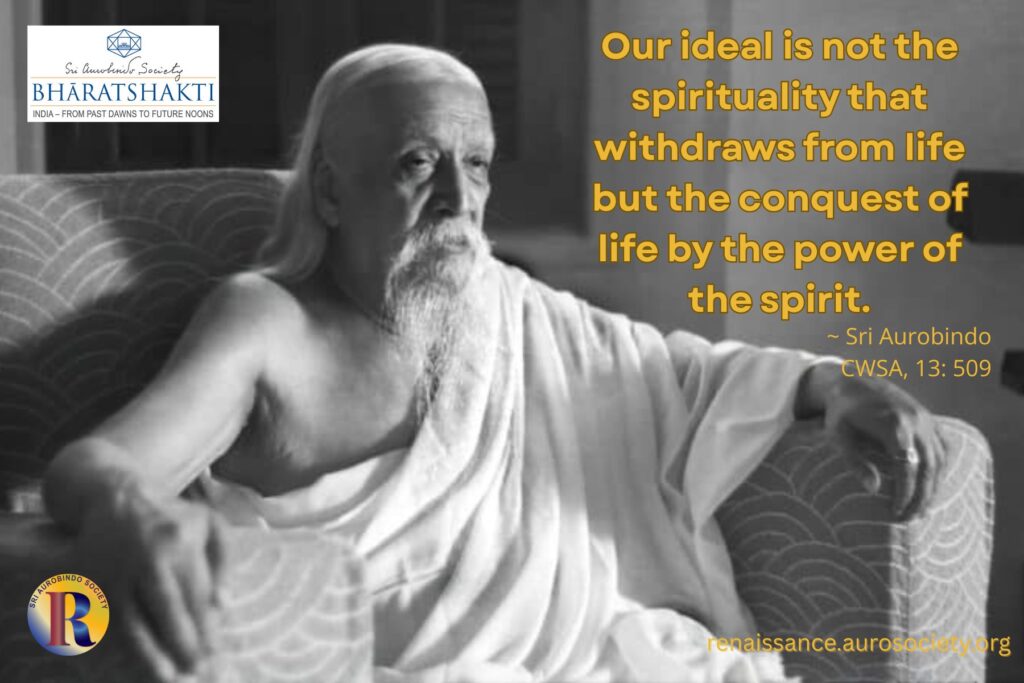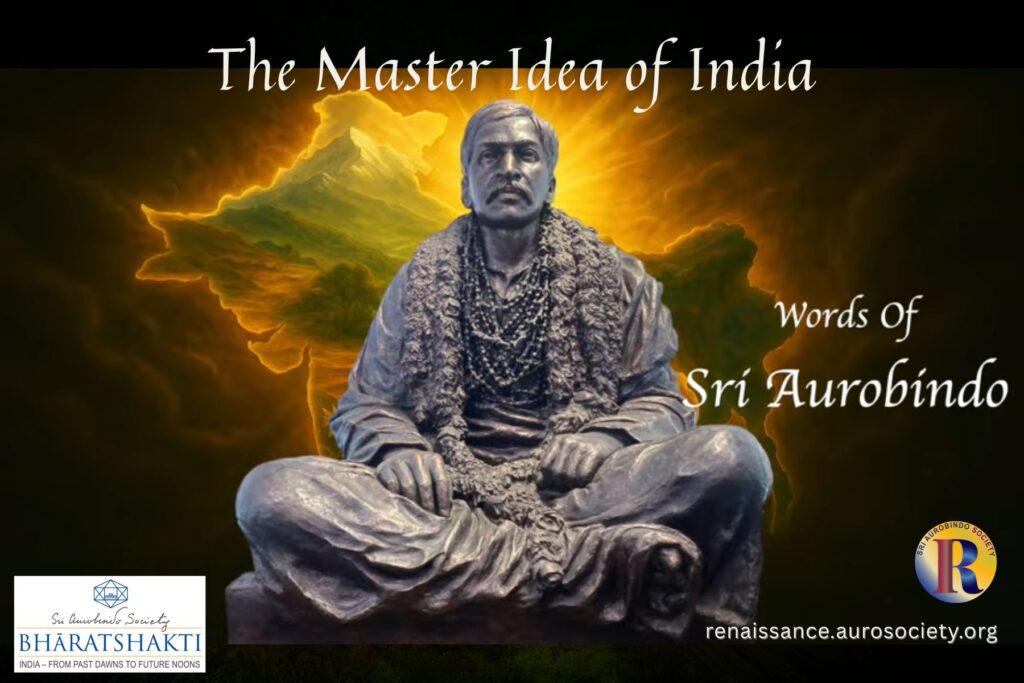Continued from Part 1
Volume II, Issue 2
Author: Dr. Rajeshwari
Editor’s note: We begin this part 2 with an aphorism of Sri Aurobindo:
For nearly forty years I believed them when they said I was weakly in constitution, suffered constantly from the smaller & the greater ailments & mistook this curse for a burden that Nature had laid upon me. When I renounced the aid of medicines, then they began to depart from me like disappointed parasites. Then only I understood what a mighty force was the natural health within me & how much mightier yet the Will & Faith exceeding mind which God meant to be the divine support of our life in this body.
(CWSA, Vol. 12, p. 474)

The panća mahābhūtas are the very source of our existence, yet humans are mindlessly abusing them and consequently suffering from health disorders and ailments. Before proceeding further, it is important to understand how and why these bhūtas exist in the universe and in the human body, which is a small universe in itself.
In spiritual terms, the human body is the jīvātmā in which the Supreme Being or the Paramātmā dwells. This mortal body is like a rented home for humans to perform their duty according to their karma, till they live out their time on earth. It is significant to add here that our ancestors who lived in compatibility with panća mahābhūtas never ‘died’ or ‘passed away’, but just left this rented house.
Even today when someone dies, it is customary to say that the person has discarded his bhoot sharīr (mortal body) or that he had given up his prāṇa, and attained sadgati to be one with the Existence or Paramātma. In Tamilian families, it is customary to send out the news of someone’s demise as that person having attained Śivaloka prāpti or Vishnuloka prāpti.
There is a great truth behind this. Prithvī, the first bhūta was created by Paramātma to nourish all living beings as long as they stay in this house (physical body). But where would the nourishment to feed us come from? Prithvī needs resources to feed her mortal children. Hence Paramātma created the other bhūtas of vāyu, jala, agni and ākāśa, all of which are His swarūpa.

It therefore became necessary to preserve and protect the bhūtas, so that living beings may exist in this world. Our forefathers took the help of the plant kingdom in this task. They studied Nature and planted an abundance of vegetation and trees. A bit of brushing up of our middle school environmental science would tell us the role of the plant kingdom in the cycle of life.
- First of all, it is the plant kingdom that purifies vāyu (air) and ākāśa (sky) – by breathing in carbon-dioxide that animals and humans exhale, and breathing out life-giving oxygen, which is needed by the latter. Plants also inhale other noxious gases in the atmosphere, which are harmful to living beings.
- Coming to jala or water, a good forest cover is essential for plentiful rainfall, as the moisture released through the process of transpiration during photosynthesis by the leaves augments the atmospheric moisture, thereby inducing rains. This in turn fills up the water bodies and rivers. It is interesting to know that both the human body and our earth are covered by 70% water.
- How do trees protect prithvī? The roots of large trees go deep into the earth and hold it together, preventing soil erosion. It is logical therefore to have lots of trees to preserve the earth.
- Those of us living in concrete jungles can appreciate the role of trees in reducing the temperature in the atmosphere and preventing global warming. This is how the plant kingdom regulates agni (fire/heat).
As mentioned in the previous part, the active element of the plant kingdom is water. Isn’t it amazing how this group of living beings, with just one active bhūta, works for the benefit of those with more active elements, including human beings who have all the five bhūtas?

Though the plant kingdom preserves all the five elements, it is vāyu that holds the first place in the scheme of things, for the simple reason that it is life itself. We can go without food for days, even months. We can do without water for days, as some people do in the ritualistic fasting without any water intake. But can we live without air even for a few minutes, unless we are trained to hold our breath for any length of time?
Our native deep-sea divers do just that as they dive in the oceans to collect pearls. Even in this day and age, they do it without any scuba suits or sophisticated deep-diving equipment – all due to their learning from their elders and practical experience, going back centuries and more.
And of course, those who do sādhanā can do this by controlling the prāña and restricting it only to the nāḍis, from root to crown. They train their body to achieve this by practising perfect prāñayama – not the kind we see now in some modern yoga training which focuses just on the postures or breath exercises learnt and practised incorrectly or half-heartedly, watching videos and TV programmes.
Our ancestors from millennia back knew the scientific truth about the need to preserve trees. Their scientific temper was honed, not in laboratories over test tubes and experiments, but through observation and experience. Scientists are only now discovering how certain plants in the close vicinity of humans can help reduce pollution and increase well-being by providing oxygen. NASA today advocates planting of these plants around and inside residences and offices because these are useful in not just cleaning the air, but also reducing people’s stress levels.

In their wisdom, our ancestors instituted a host of religious rituals around the protection of plants and trees: One of them is offering jal to trees that are of immense benefit to humans: the vatavrkśa (banyan), pīpal, aśwattha (fig), āmalaki (Indian gooseberry) and such, which have spiritual merits. Vat Savitri vrat is another such ritual, where women worship the banyan tree for the long life of their husbands.
Not just the trees, even plants that grew wild and were considered useless or poisonous were associated with particular deities and offered to them – dhaturā (thorn apple) and arka (crown flower/giant milkweed), to name a few. Why, even the humble grass dūrva (Bermuda grass) is a special offering for Lord Ganesha! All of these have special medical benefits. I will take up these and many other customs related to the panća bhūtas and discuss their physical and spiritual benefits later in the series.
The neem tree was planted closest to the home. Even today we can see at least one big neem tree in the compounds of village houses. A rope cot is usually found under it, where the members of the family relax, work or sleep. If neem was chosen to be planted near the home, they avoided planting tamarind trees in the close vicinity, planting them in a separate grove. What was so special about the neem tree and why was the tamarind shunted to a separate grove?
Let me narrate a village lore – a true incident that has become a lore over time. But for that you will have to wait for the next part.
To be continued….
Read Part 1 HERE.
~ Cover image: Rishabh Sharma



